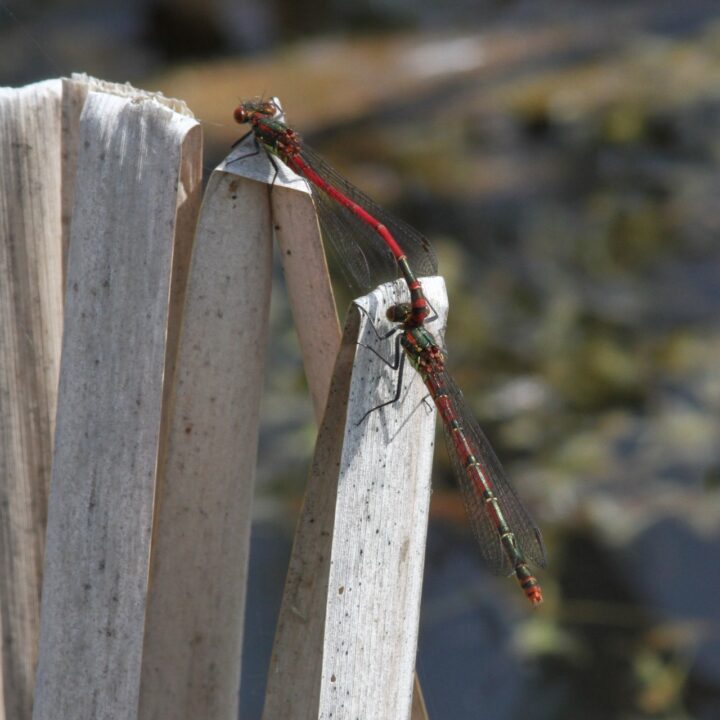
Two similar-looking species of blue damselflies also make an early appearance but stick around for longer. The Common Blue Damselfly has broad blue shoulder stripes.
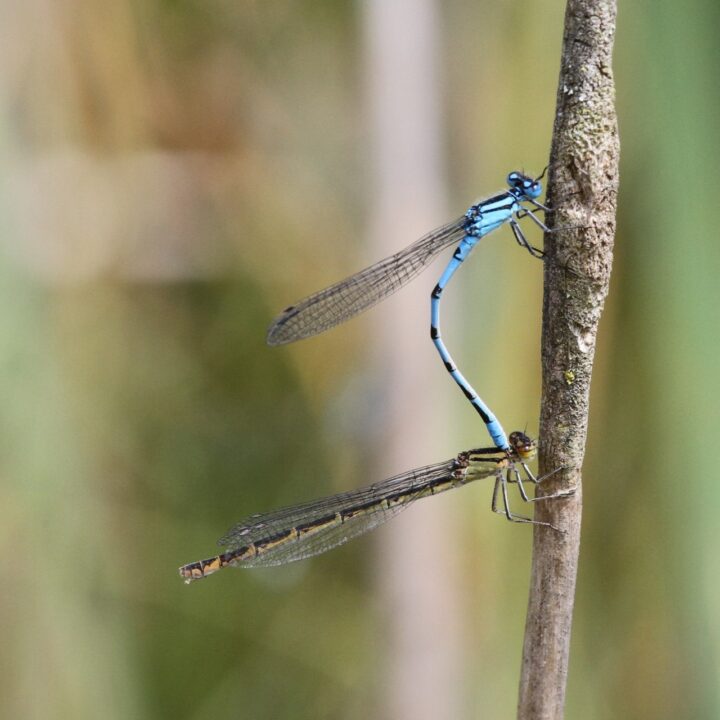
The Azure Damselfly has narrow shoulder stripes and an extra short black line on the side of the thorax (the coenagrion spur). With a good view the male also has a distinctive U-shaped black mark at the top of the abdomen.
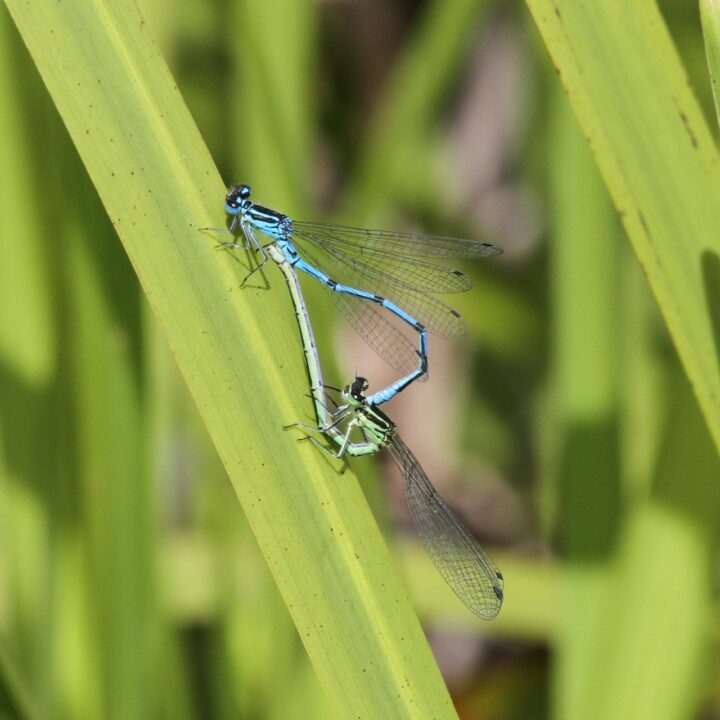
The Blue-tailed Damselfly is smaller. The male has a blue thorax and a blue tip to the abdomen. Females come in a large variety of colours – the side of the thorax can be blue, green, brown, orange, pink or violet. And the “tail” isn’t always blue!
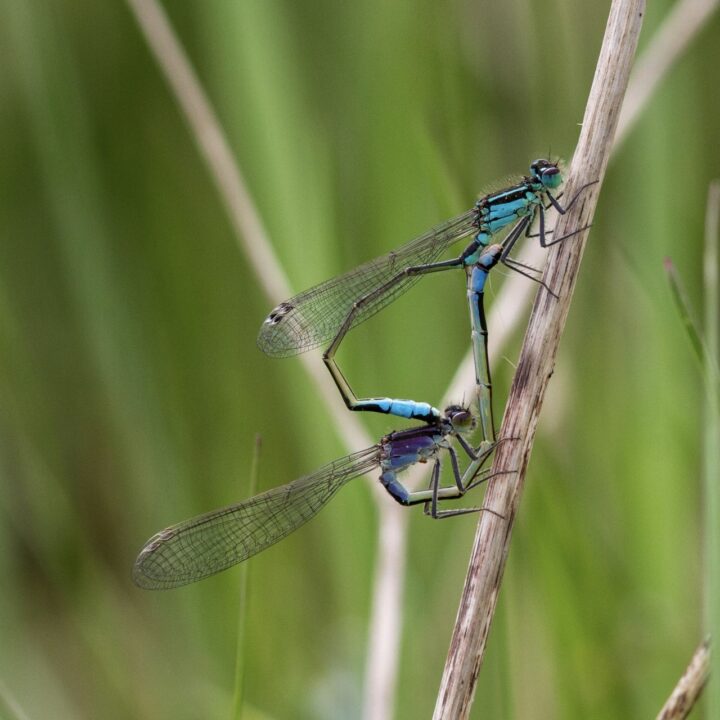
The first dragonflies we see in the North East are chasers. The Four-spotted Chaser looks dark as it flies and often returns to the same perch. The two sexes are much alike and difficult to distinguish in the field.
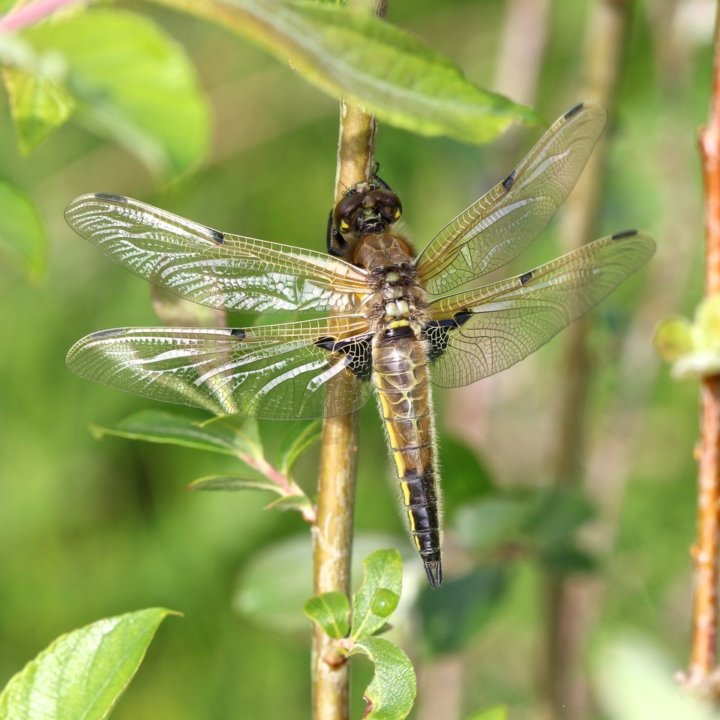
The Broad-bodied Chaser is less widespread in our region. Mature males are blue (like many dragonflies immature males are similar in colouring to females).
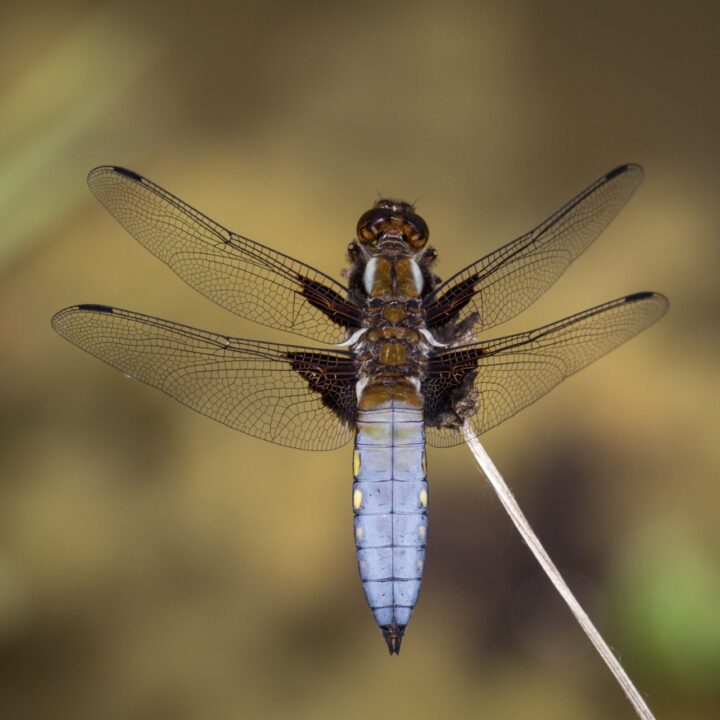
Females are mainly yellow, turning darker brown with age.
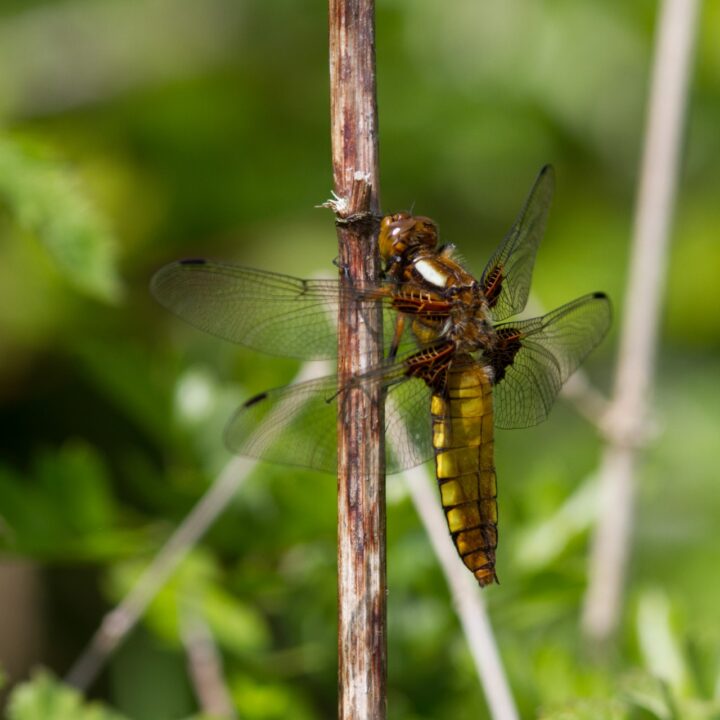
From early June we see our largest dragonfly on the wing. The Emperor Dragonfly is unmistakeable, being our only blue dragonfly at this time of year. Males spend much of their time patrolling the water’s edge. This one is accompanied by a male azure damselfly for scale.
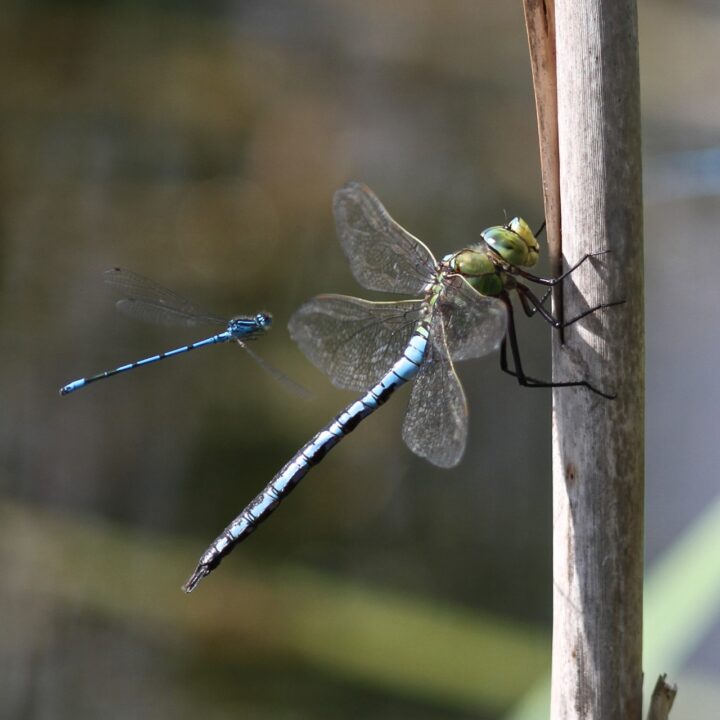
Females are harder to find and are easiest to see when ovipositing.
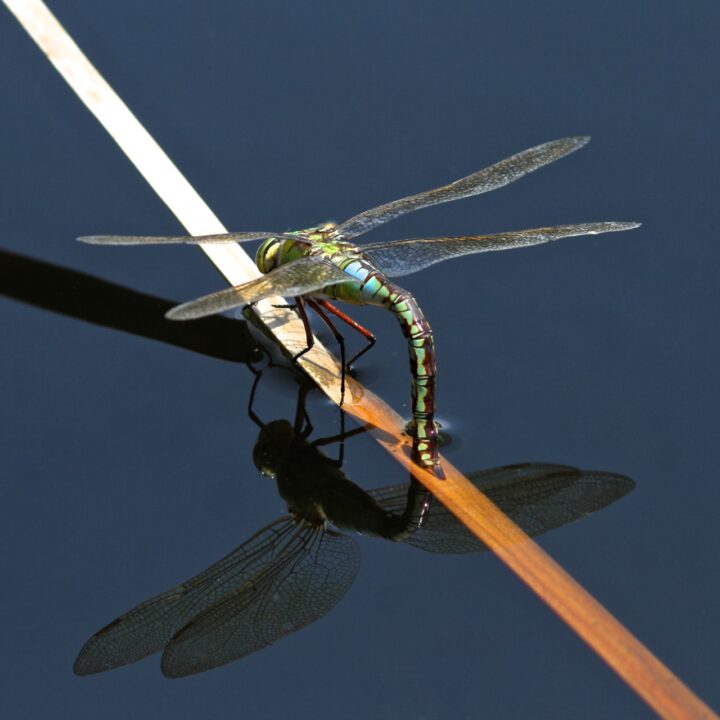
All of these species are found in Gosforth Nature Reserve. There are also two less common species to look out for locally. The Banded Demoiselle is present on several smaller rivers in Northumberland but can also appear on nearby still waters. The Rivers Pont and Blyth are two places to look for them.
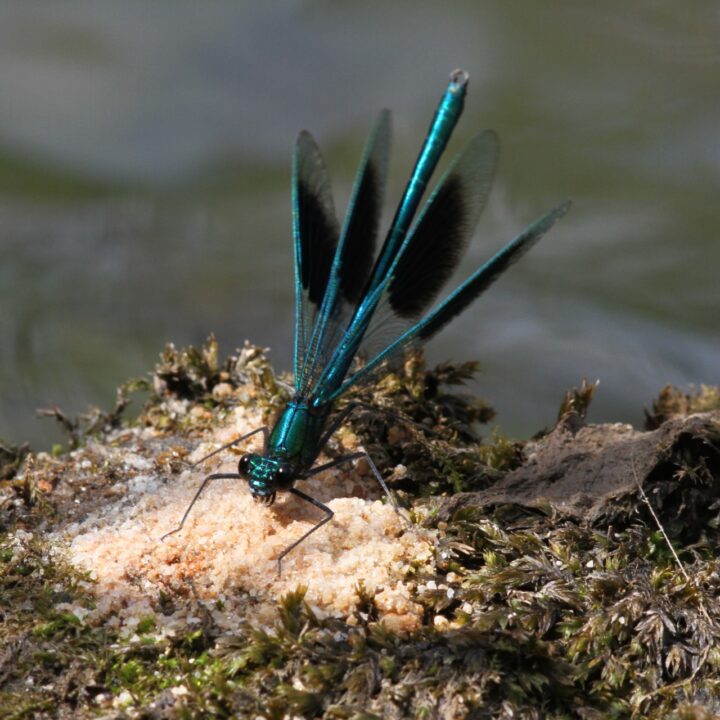
The Black-Tailed Skimmer is still rare locally and likes to sit on dried mud at the edge of still water. Bowes Valley Nature Reserve is a good place to look for this species.
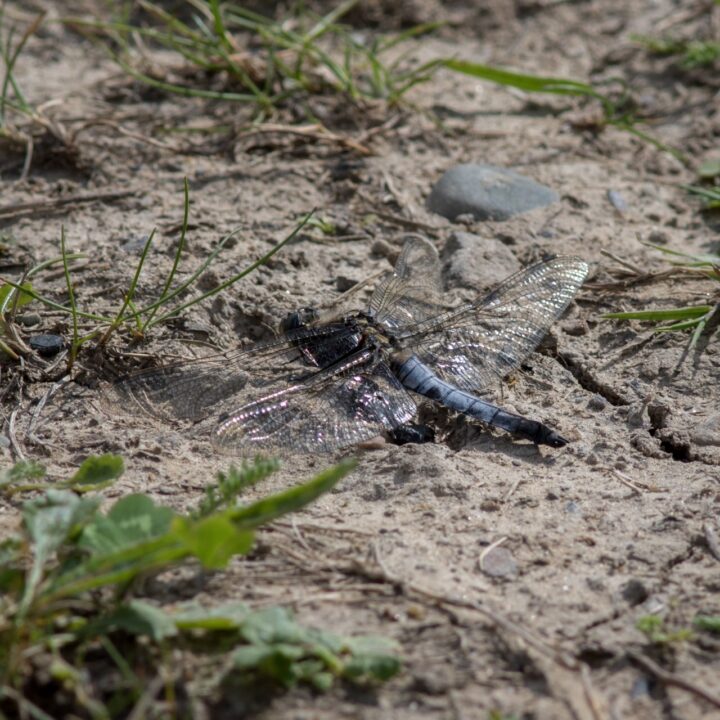
Later in the summer the darters and hawkers will appear, the subject of a future post.
By Christopher Wren, local naturalist and NHSN volunteer